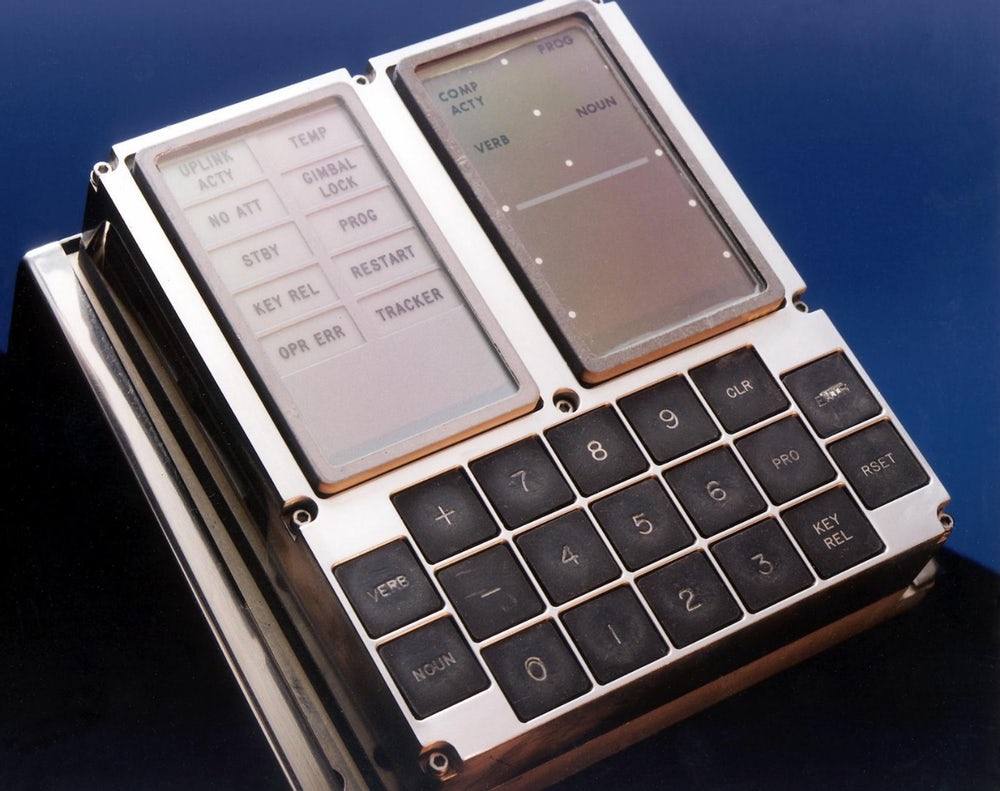Apollo Guidance Computer, also known as the AGC, was the epitome of cybernetic wonder and when the Apollo 11 made its touch in the Sea of Tranquility on July 20, 1969, it was proven that computers were here to stay!


The Apollo Guidance Computer helped the astronauts to navigate to the Moon safely and then back to Earth. In fact, it was a computer so advanced for its time that the building engineers had said that if they knew what they were getting into; they would never have even tried. The Apollo Guidance Computer encountered only a few in-flight problems, and even most of them were because of human errors. It was carried upon the Command Service Module (CSM) and the Lunar Module (LM). It was a part of fifteen manned missions; nine moon flights, six lunar landings, three Skylab missions, and the Apollo-Soyuz Test Mission in 1975.



The AGC was the very first digital flight computer and the latest and most advanced inertial guidance system and fly-by-wire. It was also the first computer to make use of silicon chips and the very first onboard computer whose functioning was directly responsible for the lives of the crew. It weighed in at 14 kilograms and had a total of 72K of memory and 12-microsecond clock speed.



However, since Apollo Guidance Computer was not a general purpose computer; it is quite difficult to make a comparison of the machine with modern devices. It was hardwired to carry out a particular task and was able to perform at the same level as ZX Spectrum or the Commodore 64. How would you feel if you knew that a computer comparable to Commodore 64 was in charge of taking you to the Moon?



A computer was required because navigating a trip to the Moon was at the very least quite complex. There was a high number of variables and attempted to solve that many equations for such a journey were next to impossible. Furthermore, even solving them meant you had an estimate and not the accurate answer. It was also decided that the calculations were too complex to have the astronauts carry them out. This is where the Apollo Guidance Computer came in!



The Apollo Guidance Computer featured two metal trays with one tray serving for memory while the other was being used for logic circuits featuring a total of 30,000 components. The AGC’s design was kept as simple as was possible while keeping the number of parts to a bare minimum, thus making sure that it weighed less and offered enhanced reliability. The reliability was a key factor, and the components were hermetically sealed, thus making sure that no moisture or dust was able to interfere with the working of the computer.



The computer worked like a charm, and the only problems that arose were because of entering the wrong code or flipping the switches incorrectly. When the Apollo 11 was descending towards the Sea of Tranquility, a rendezvous radar had been left on by accident. The radar was feeding meaningless data to the AGC. A modern computer would have either crashed or frozen, but the AGC signaled ‘1202’ for an overload error and then proceeded to switch off every program instead of number one and restarted. Mission Commander Neil Armstrong was given the GO command to carry on with the landing thanks to the AGC!


